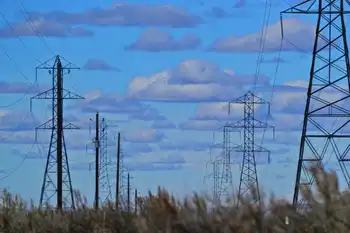Plant invests in state-of-the-art equipment
RICHMOND, INDIANA - The new, electric-fired melter at the Richmond Johns Manville plant holds all the ingredients to make fiberglass insulation. It also holds 81 jobs and the promise of future work.
Installing the state-of-the-art Sorg melter last year in a $49 million equipment upgrade was part of the commitment the longtime employer made to staying in business here, instead of closing its aging Richmond Avenue plant and moving the jobs away.
While some manufacturers have abandoned the city, Johns Manville saw a lot of positives in staying here, Richmond plant manager Joe Ehrenreich said. The company celebrated its 70th anniversary in the city this fall.
"It was a good location, with easy access to the highway and rail. It also had good access to electricity with reasonable rates, making an electric-fired melter more economical than the natural gas one," Ehrenreich said. "And it has a stable work force."
Johns Manville also received some financial incentives to stay, said Tony Foster, executive director of metropolitan development for Richmond. Richmond was competing with four other communities for the plant, said Bob Hansen, manager of retention and expansion for the Economic Development Corporation of Wayne County.
Saving the manufacturer was important to the local economy, Hansen said. EDC estimated Johns Manville jobs contribute more than $14 million in economic impact to the Richmond community, he said. Since 2006, Hansen estimates Wayne County has lost about 800 manufacturing jobs.
In addition to a training grant for Johns Manville, the Redevelopment Commission sold a $2.16 million Tax Increment Finance bond to help with cost of equipment upgrades, Foster said.
A new TIF district was created encompassing the entire JM property. The bond will be repaid by increased taxes the company pays on the higher property assessments, Foster said. Under TIF rules, the Redevelopment Commission receives the new taxes generated by the investment to repay bonds or make other improvements. No tax abatement was requested for this project, he said.
To boost electrical power to the factory, RP&L built a new substation in the west-side neighborhood to supply the electric-fired melter, Richmond Power & Light engineer David Stevens said. Johns Manville, by itself, uses about 18 percent of the electric demand of the entire city, he said. The company guaranteed it would purchase a minimum level of power as part of the agreement for a new substation, Stevens said.
"The facilities we had weren't adequate to supply them," Stevens said. "The new station has a dual transformer. Each one could power Johns Manville by itself."
Cooperating with Johns Manville also benefited RP&L, which had lost several industrial customers, Stevens said.
"Their expansion was excellent for both of us," Stevens said.
The Richmond plant is one of only two Johns Manville plants producing loose-fill insulation. Insulation made in Richmond is shipped to 44 states and eastern Canada, Ehrenreich said.
Johns Manville's new, round Sorg melter is the largest in North America and the second-largest in the world, Ehrenreich said. It can hold enough material at one time to insulate more than 900 homes.
Turning like a slow merry-go-round, the melter evenly heats glass-making materials to 2,200 degrees. As the molten glass leaves the melter, the temperature drops as it's spun into fiberglass by a process similar to making cotton candy.
A hammermill processes the fiber to ensure the product is uniform, so the R-value and coverage will meet specifications, Ehrenreich said. Six new baggers to package the insulation were also part of the renovation project, along with upgrades in wiring and a new computerized control room.
The large melter has substantially increased production capacity at the Richmond plant, but the housing slowdown has meant the extra capacity is largely unused right now, Ehrenreich said. Even so, business has been steady enough that no employees are currently on layoff. And the focus now on global warming and energy conservation is a plus for the insulation business, he said.
"We have enough business to keep everyone employed and we're planning to be up and running the rest of the year and next year," Ehrenreich said.
Related News

Energy Security Support to Ukraine
WASHINGTON - In the midst of Russia’s continued brutal attacks against Ukraine’s energy infrastructure, Secretary of State Blinken announced today during a meeting of the G7+ on the margins of the NATO Ministerial in Bucharest that the United States government is providing over $53 million to support acquisition of critical electricity grid equipment. This equipment will be rapidly delivered to Ukraine on an emergency basis to help Ukrainians persevere through the winter. This supply package will include distribution transformers, circuit breakers, surge arresters, disconnectors, vehicles and other key equipment.
This new assistance is in addition to $55 million in emergency energy…




